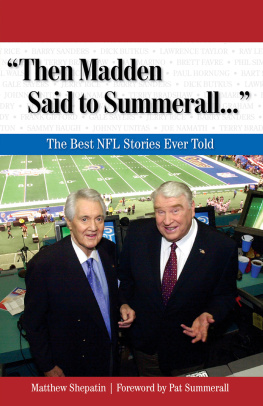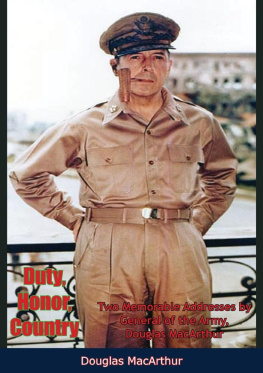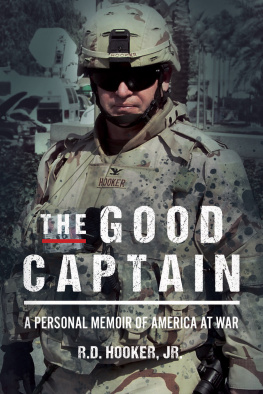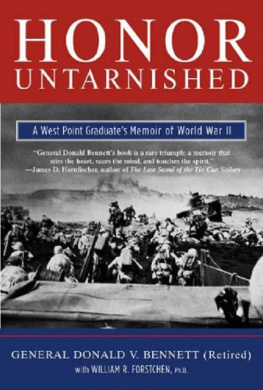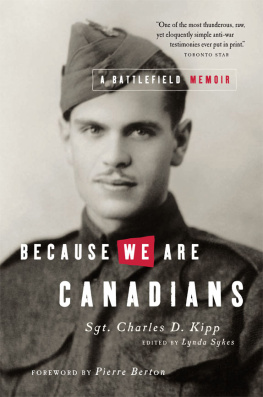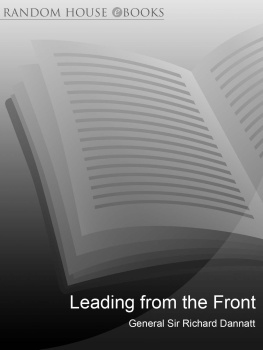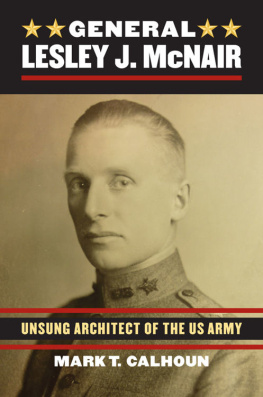The Way of
Duty, Honor, Country
The Memoir of
General Charles Pelot Summerall
CHARLES PELOT SUMMERALL
Edited and Annotated
by Timothy K. Nenninger
Original Manuscript and Research Assistance Provided by
the First Division Museum at Cantigny, Wheaton, Illinois
THE UNIVERSITY PRESS OF KENTUCKY
Copyright 2010 by The University Press of Kentucky
Scholarly publisher for the Commonwealth, serving Bellarmine University, Berea College, Centre College of Kentucky, Eastern Kentucky University, The Filson Historical Society, Georgetown College, Kentucky Historical Society, Kentucky State University, Morehead State University, Murray State University, Northern Kentucky University, Transylvania University, University of Kentucky, University of Louisville, and Western Kentucky University.
All rights reserved.
Editorial and Sales Offices: The University Press of Kentucky 663 South Limestone Street, Lexington, Kentucky 40508-4008 www.kentuckypress.com
14 13 12 11 10 5 4 3 2 1
Library of Congress Cataloging-in-Publication Data
Summerall, Charles Pelot, 1867-1955.
The way of duty, honor, country : the memoir of general Charles Pelot Summerall / Charles Pelot Summerall / edited and annotated by Timothy K. Nenninger.
p. cm.(American warriors)
Includes bibliographical references and index.
ISBN 978-0-8131-2618-0 (hardcover : alk. paper)
1. Summerall, Charles Pelot, 1867-1955. 2. GeneralsUnited StatesBiography. 3. United States. ArmyOfficersBiography. 4. United States. ArmyHistory20th century. 5. United StatesHistory, Military20th century. 6. Citadel, the Military College of South CarolinaHistory. I. Nenninger, Timothy K II. Title.
E745.S86A3 2010
355.0092dc22
[B] 2010030431
This book is printed on acid-free recycled paper meeting the requirements of the American National Standard for Permanence in Paper for Printed Library Materials.
Manufactured in the United States of America.
Member of the Association of
American University Presses
Editor's Note
About 1950, as an octogenarian, Charles P. Summerall recorded his memoir with a pencil on yellow foolscap, titling it The Way of Duty, Honor, Country. According to his grandson, Dr. Charles P. Summerall III, of Charleston, South Carolina, the general wrote it largely as a diversion without a plan to publish. After Summerall's death, his son typed the manuscriptsingle spaced, 185 pages. For many years, a copy was available to researchers at the archives of the Citadel, where Summerall had been superintendent from 1931 to 1953, and where a collection of his papers is housed. In 1998, the Cantigny First Division Museum received the rights to the manuscript from Charles P. Summerall III and enlisted my services to prepare the memoir for publication.
Working from a copy four generations removed from the original, I have endeavored to provide the sort of copyediting that a publisher would have required had Summerall sent his draft manuscript to a commercial, academic, or military specialty outlet at the time he wrote it. Among other work, three-page paragraphs have been reduced to more manageable proportions, while successive single-sentence paragraphs have been combined to produce more readable copy. The overall effort has been to improve syntax, readability, and narrative flow. Summerall had an important and interesting military career, and his memoir reflects that. But the manuscript, written many years removed from the events described, often rambled and included tangential observations unrelated to the main flow of the narrative. I have attempted to bring focus to the effort that, on occasion, has resulted in the deletion of perceived irrelevant or misplaced passages.
The simple copyediting in particular attempted to correct spelling, punctuation, and grammatical errors as well as standardize capitalization. A significant effort involved the identification in notes of people, places, things, and events not clearly or fully described in the text. In a few cases, mostly involving people, additional identification proved impossible, and Summerall's identification, or lack thereof, remains unchanged. Also, I did not always include annotations for well-known individuals or those for whom Summerall provided description or context.
A variety of sources, published, manuscript, and human, assisted in this effort. Published sources included dictionaries, geographic dictionaries, gazetteers, atlases, registers of U.S. Army officers, West Point and Annapolis alumni registers, Who's Who, and biographical and military dictionaries as well as a range of histories, memoirs, and monographs that concern the army from the late nineteenth century to the mid-twentieth. The occasional Google search in a number of instances solved difficult conundrums of identification, particularly of obscure individuals mentioned in the text. Military records in the National Archives were frequently the crucial source for much of the identification and annotation effort, as were the forty-three boxes of the Charles P. Summerall Papers in the Manuscript Division at the Library of Congress. The result is over five hundred annotations, identifications, and other notes. Most frequently, the annotations provide brief biographical information about individuals. Because the various elements of the identification (birth, death, and retirement dates, military rank, important positions held, etc.) for a particular individual frequently came from multiple sources and often from different annual editions of the same publication (different years of the Army Register, Who's Who, or the West Point Register of Graduates, e.g.), I usually did not provide a specific citation to each published source consulted for this information. In instances where the information came from unpublished manuscript or archival material, source citations are included. General Summerall mentions many more than a hundred individuals in the text, including army colleagues, relatives, family friends, and others with whom he had contact. I have attempted to provide some basic biographical information about as many of these people as possible. The military identifications were usually possible to determine, but, in some instances, it was not possible from manuscript or other sources to provide positive identification or complete biographical information.
Richard Peuser, Trevor Plante, and Mitchell Yockelson at the National Archives assisted in identifying relevant records and needed files. Robert Cressman at the Naval Historical Center and John J. Rhodes at the Marine Corps History Division provided information about ships and people. Jane Yates at the Citadel archives looked up needed biographical information about several of Summerall's associates at that institution. Holly Reed at the National Archives, Tim Frank, an independent researcher, and Andrew Woods at the First Division Museum provided crucial support in locating and copying relevant photographs.



